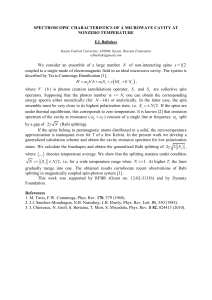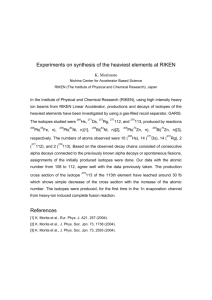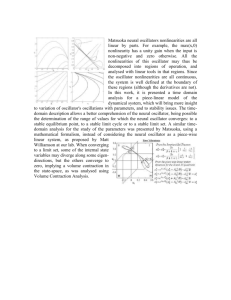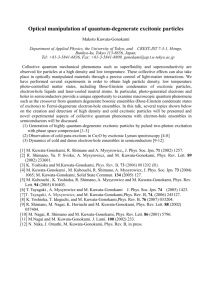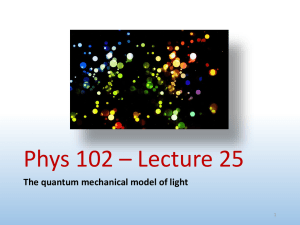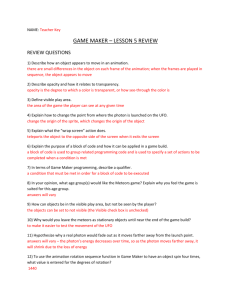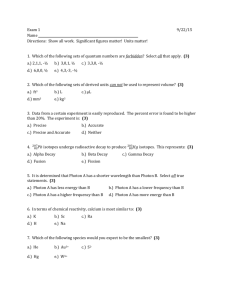Inapplicability of the giant oscillator strength model to excitonic
advertisement
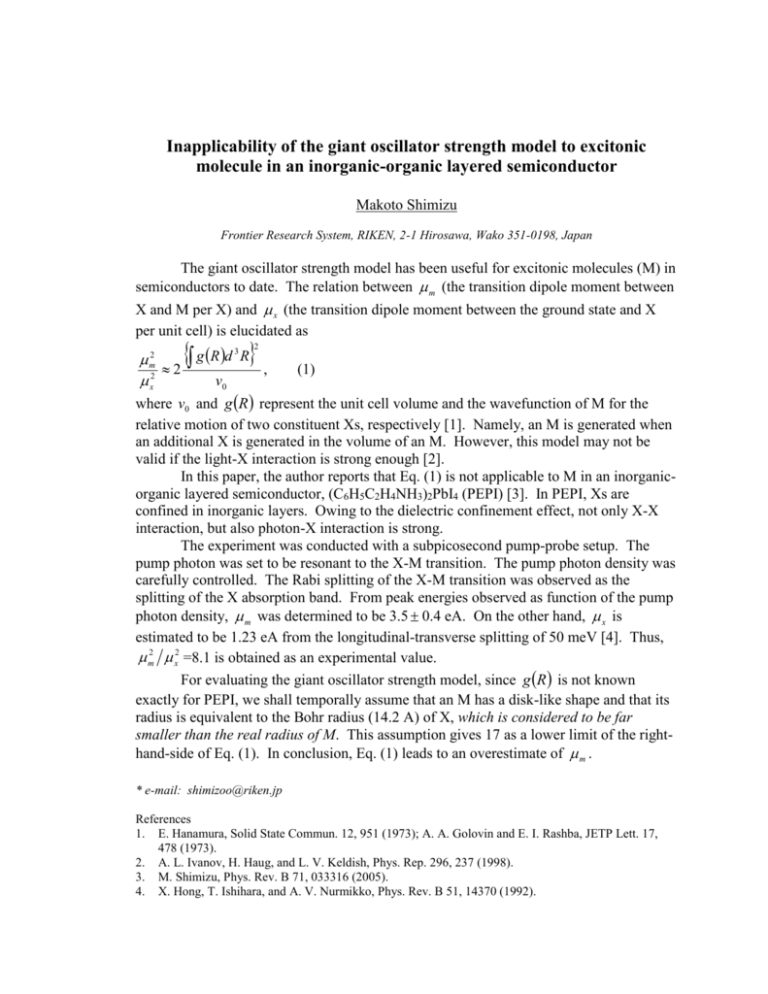
Inapplicability of the giant oscillator strength model to excitonic molecule in an inorganic-organic layered semiconductor Makoto Shimizu Frontier Research System, RIKEN, 2-1 Hirosawa, Wako 351-0198, Japan The giant oscillator strength model has been useful for excitonic molecules (M) in semiconductors to date. The relation between m (the transition dipole moment between X and M per X) and x (the transition dipole moment between the ground state and X per unit cell) is elucidated as m2 g R d R , (1) 2 v0 x2 where v0 and g R represent the unit cell volume and the wavefunction of M for the relative motion of two constituent Xs, respectively [1]. Namely, an M is generated when an additional X is generated in the volume of an M. However, this model may not be valid if the light-X interaction is strong enough [2]. In this paper, the author reports that Eq. (1) is not applicable to M in an inorganicorganic layered semiconductor, (C6H5C2H4NH3)2PbI4 (PEPI) [3]. In PEPI, Xs are confined in inorganic layers. Owing to the dielectric confinement effect, not only X-X interaction, but also photon-X interaction is strong. The experiment was conducted with a subpicosecond pump-probe setup. The pump photon was set to be resonant to the X-M transition. The pump photon density was carefully controlled. The Rabi splitting of the X-M transition was observed as the splitting of the X absorption band. From peak energies observed as function of the pump photon density, m was determined to be 3.5 0.4 eA. On the other hand, x is estimated to be 1.23 eA from the longitudinal-transverse splitting of 50 meV [4]. Thus, m2 x2 =8.1 is obtained as an experimental value. For evaluating the giant oscillator strength model, since g R is not known exactly for PEPI, we shall temporally assume that an M has a disk-like shape and that its radius is equivalent to the Bohr radius (14.2 A) of X, which is considered to be far smaller than the real radius of M. This assumption gives 17 as a lower limit of the righthand-side of Eq. (1). In conclusion, Eq. (1) leads to an overestimate of m . 3 2 * e-mail: shimizoo@riken.jp References 1. E. Hanamura, Solid State Commun. 12, 951 (1973); A. A. Golovin and E. I. Rashba, JETP Lett. 17, 478 (1973). 2. A. L. Ivanov, H. Haug, and L. V. Keldish, Phys. Rep. 296, 237 (1998). 3. M. Shimizu, Phys. Rev. B 71, 033316 (2005). 4. X. Hong, T. Ishihara, and A. V. Nurmikko, Phys. Rev. B 51, 14370 (1992).
